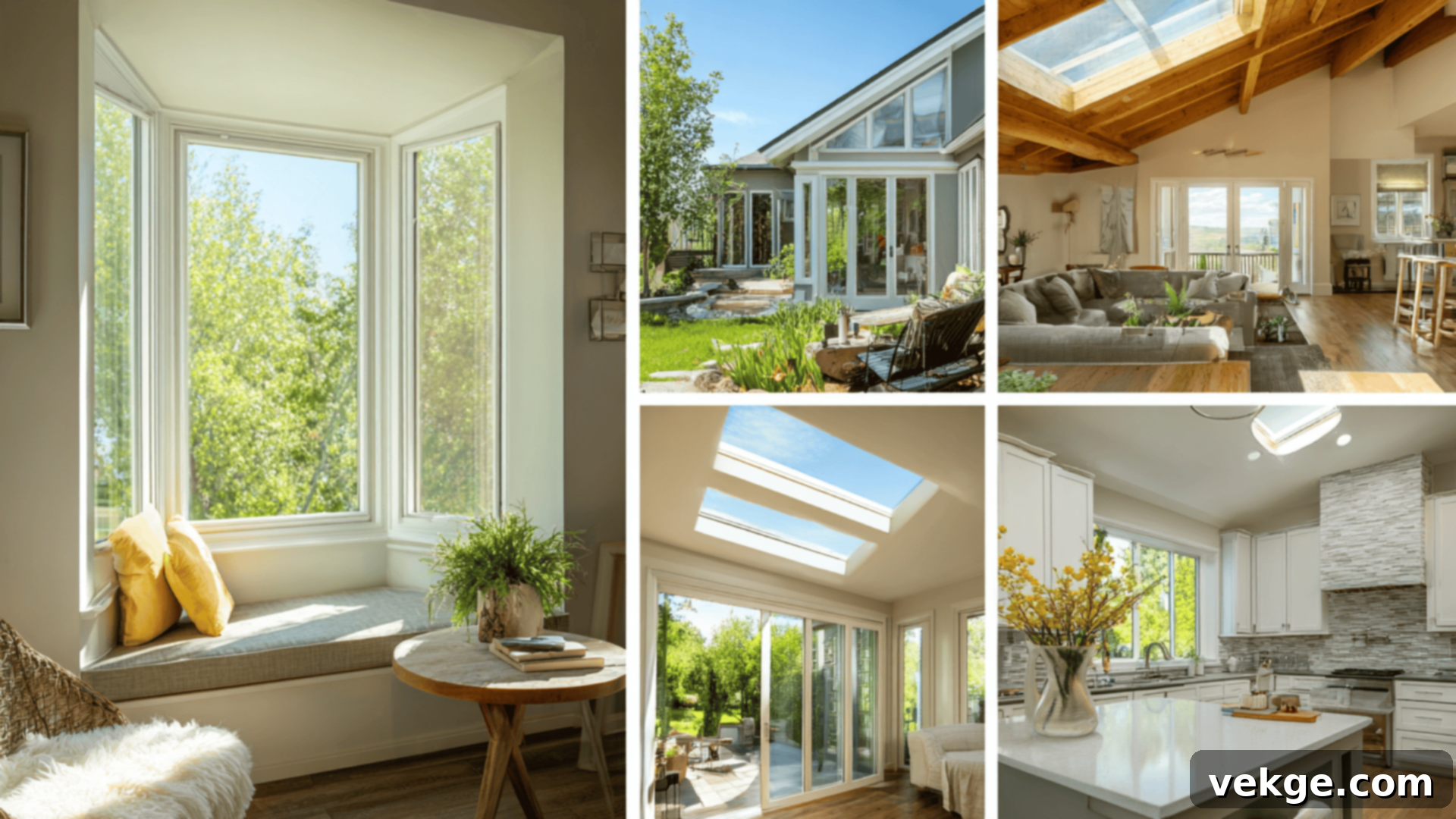Choosing the Perfect Windows for Your Home: A Comprehensive Guide to Styles, Materials, and Energy Efficiency
Navigating the vast array of window options for your home can feel like a daunting task. Whether you’re building a new house, undertaking a major renovation, or simply looking to upgrade, the sheer number of window types, materials, and features available can quickly lead to confusion. You’re not alone in feeling this way. This comprehensive guide is designed to cut through the complexity, offering clear, concise information to help you make informed decisions.
We’ll explore the most popular window styles, detailing how each functions, its ideal placement within a home, and the crucial factors to consider regarding materials. Beyond just aesthetics, we’ll delve into how to select windows that complement your room’s purpose, your home’s architectural design, and the local climate, ensuring optimal comfort and energy efficiency. By the end of this article, you’ll have a clear understanding of the best windows to suit your specific needs, budget, and personal style, transforming your home with natural light and fresh air.
Understanding the Basics: What Defines a Window Type?
Before diving into specific styles, let’s understand the fundamental characteristics that differentiate one window type from another. This foundational knowledge is key to making a well-reasoned choice for your property.
What Distinguishes One Window Type from Another?
A window’s type is primarily determined by its operational mechanism and visual design. Key defining elements include:
- Opening Mechanism: Does it slide, swing, crank, or remain fixed?
- Installation Location: Is it a wall-mounted window or designed for a roof (skylight)?
- Functionality: How much light and ventilation does it offer?
Each window type boasts a unique blend of style and function, making it more suitable for certain areas or purposes within a home. Understanding these distinctions is crucial for selecting windows that enhance both the beauty and utility of your living spaces.
Key Features to Consider When Selecting Windows
When you’re ready to choose new windows, keep these important features in mind. They will significantly impact the comfort, appearance, and efficiency of your home:
- Operation and Accessibility: Windows can open in various ways – sliding horizontally or vertically, swinging inward or outward, or remaining fixed. Consider how easily you can open, close, and clean each type, especially in hard-to-reach areas.
- Material Durability and Aesthetics: Common frame materials include vinyl, wood, aluminum, and fiberglass. Each material offers distinct advantages in terms of cost, insulation properties, maintenance requirements, and aesthetic appeal. Your choice will influence both the longevity and the visual harmony with your home’s design.
- Energy Efficiency Ratings: High-performance windows play a critical role in managing your home’s temperature and reducing energy bills. Look for features like double or triple-pane glass, low-emissivity (Low-E) coatings, and inert gas fills (argon or krypton) between panes. Key metrics are U-Factor (heat loss) and Solar Heat Gain Coefficient (SHGC – solar heat gain).
- View and Natural Light: The primary purpose of many windows is to provide views and allow natural light. Picture windows offer unobstructed vistas, while others may have sashes or grids that slightly impede the view. Consider the room’s orientation and how much light you desire.
- Architectural Style Harmony: Windows are a prominent architectural feature. Ensure your chosen window type, frame material, and even grid patterns complement your home’s overall design, whether it’s modern, traditional, Craftsman, or farmhouse.
- Security and Safety: Consider the locking mechanisms and the potential for a window to serve as an emergency exit (egress). Some window types offer superior security, while others are better suited for specific safety requirements.
By carefully evaluating these features, you can confidently choose windows that perfectly match your home’s aesthetic, functional requirements, and your lifestyle.
Exploring the Most Common Window Types for Your Home
Let’s dive into the specifics of the most popular window styles, detailing their unique characteristics, ideal applications, and key benefits and drawbacks.
1. Single-Hung Windows
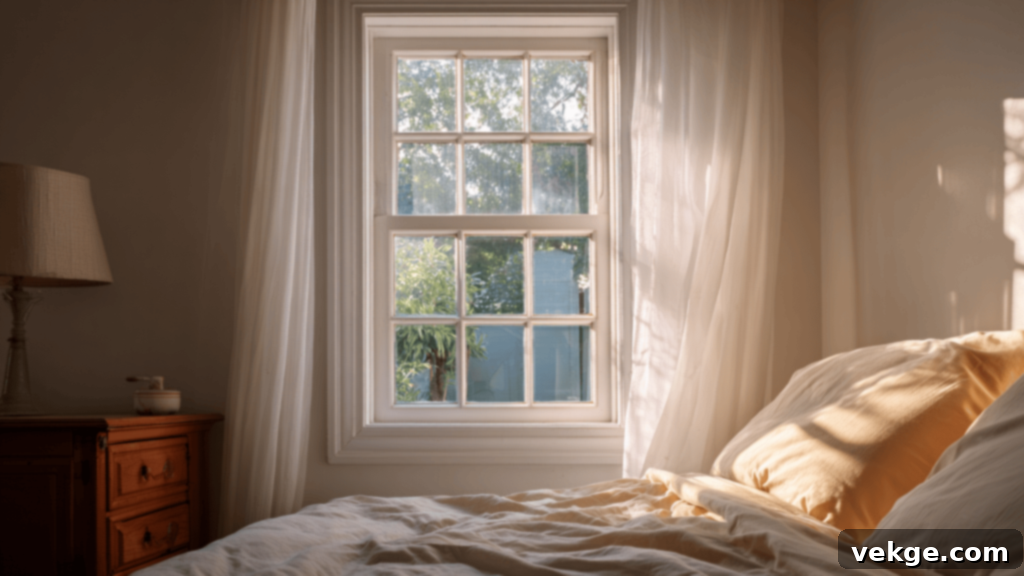
Single-hung windows feature two sashes stacked vertically, but only the bottom sash is operable. To open them, you simply slide the lower sash upwards, allowing air to circulate. The top sash remains fixed, providing a classic, clean look. This design has been a staple in homes for generations due to its simplicity and cost-effectiveness.
- Pros: Generally more affordable, straightforward to operate, often quite energy-efficient due to fewer moving parts in the top sash, and adaptable to many traditional home styles.
- Cons: Offers limited airflow as only half the window opens, cleaning the exterior of the top sash can be challenging without external access, and they lack the versatile ventilation options of double-hung windows.
- Best For: Ideal for bedrooms, bathrooms, and smaller rooms where maximum airflow isn’t the primary concern, or for homes seeking a consistent traditional aesthetic.
2. Double-Hung Windows
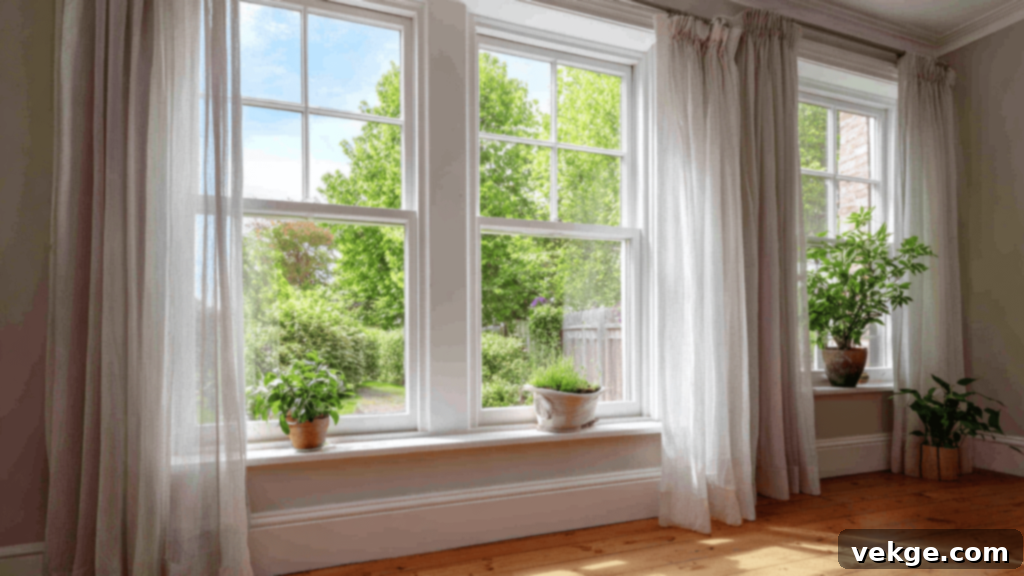
Visually similar to single-hung windows, double-hung windows offer greater flexibility because both the top and bottom sashes are operable. You can slide either sash up or down independently, providing excellent control over ventilation. Many modern double-hung windows also tilt inward, simplifying exterior cleaning from inside your home.
- Pros: Allows for superior airflow management (e.g., opening the top sash to let hot air out while the bottom lets cool air in), much easier exterior cleaning, and versatile ventilation options for improved comfort.
- Cons: Typically more expensive than single-hung windows, and if not properly sealed and maintained, the multiple moving parts can potentially lead to more air drafts over time.
- Best For: Any room where excellent airflow, ease of cleaning, and flexible ventilation are desired, making them a popular choice throughout the home.
3. Casement Windows
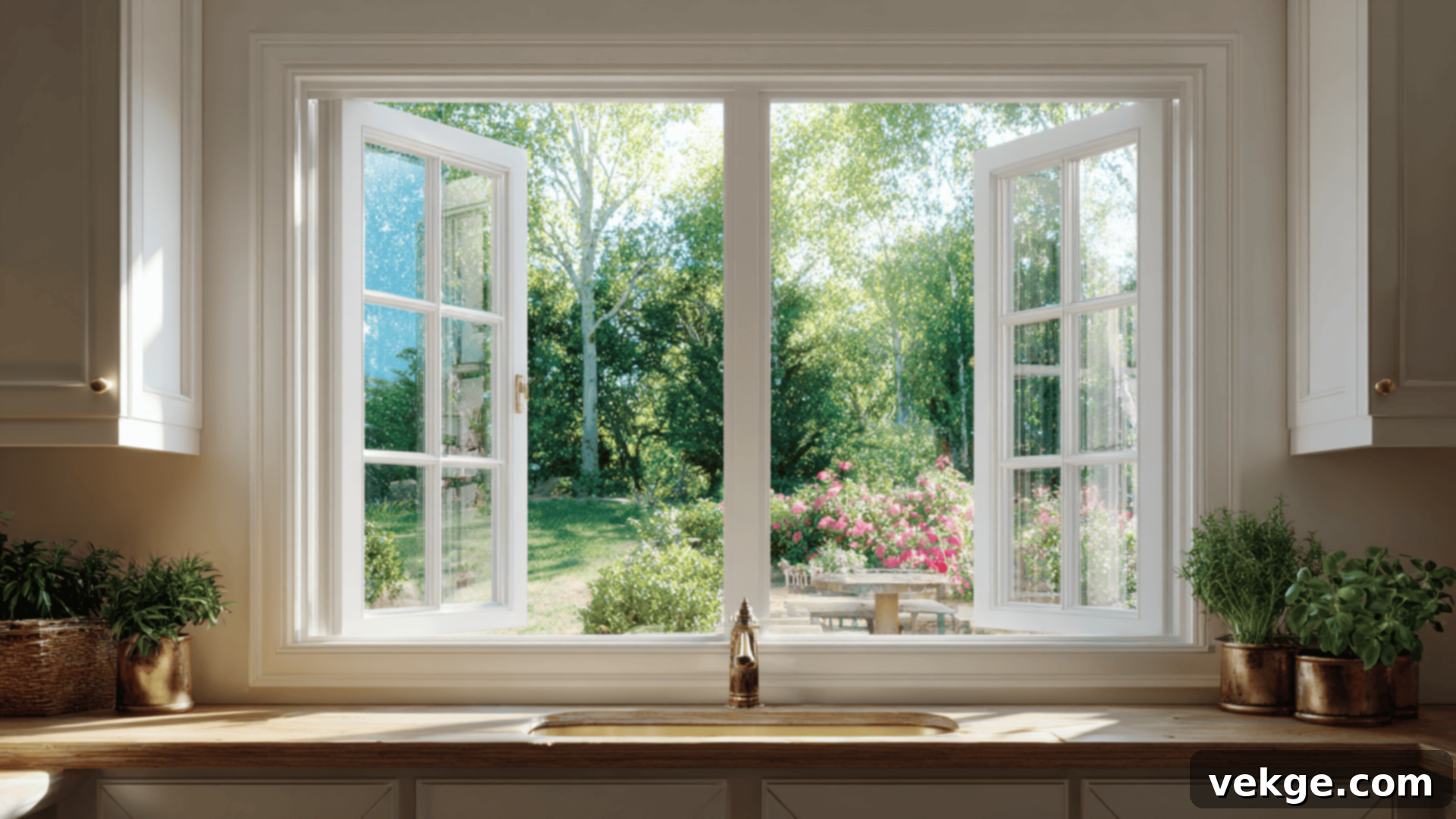
Casement windows are hinged on one side and open outward, much like a door, operated by a crank mechanism. They offer a full, unobstructed opening, making them exceptionally effective for maximizing airflow and providing expansive views when open. Their tight seal when closed also contributes to excellent energy efficiency.
- Pros: Provide outstanding ventilation and full opening for fresh air, offer clear, wide views, and are highly energy-efficient when securely closed due to their compression seal.
- Cons: May protrude outwards, potentially interfering with walkways or landscaping, and the crank mechanisms can sometimes wear out or become stiff over many years of use.
- Best For: Kitchens (especially over sinks where reaching is difficult), bathrooms, or any area where maximizing airflow and a clear view are priorities.
4. Awning Windows
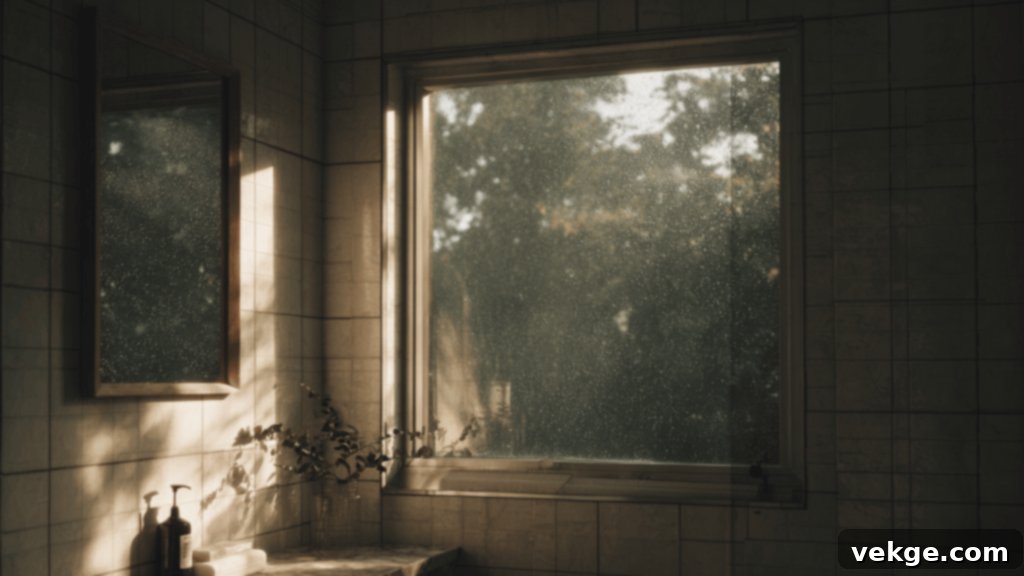
Awning windows are hinged at the top and open outwards from the bottom, creating a “awning” effect. This design is particularly effective at allowing ventilation even during light rain, as the outward-sloping glass deflects water. They often feature a modern, sleek appearance.
- Pros: Excellent ventilation even in rainy conditions, offer good security when slightly open, and their clean lines complement contemporary home designs.
- Cons: Not suitable for emergency exits due to their outward opening and sometimes smaller size, and their open position can slightly obstruct views compared to a fully open casement.
- Best For: Bathrooms, basements, or placed high on walls to provide ventilation while maintaining privacy. They also work well as a complement under larger fixed windows.
5. Picture Windows
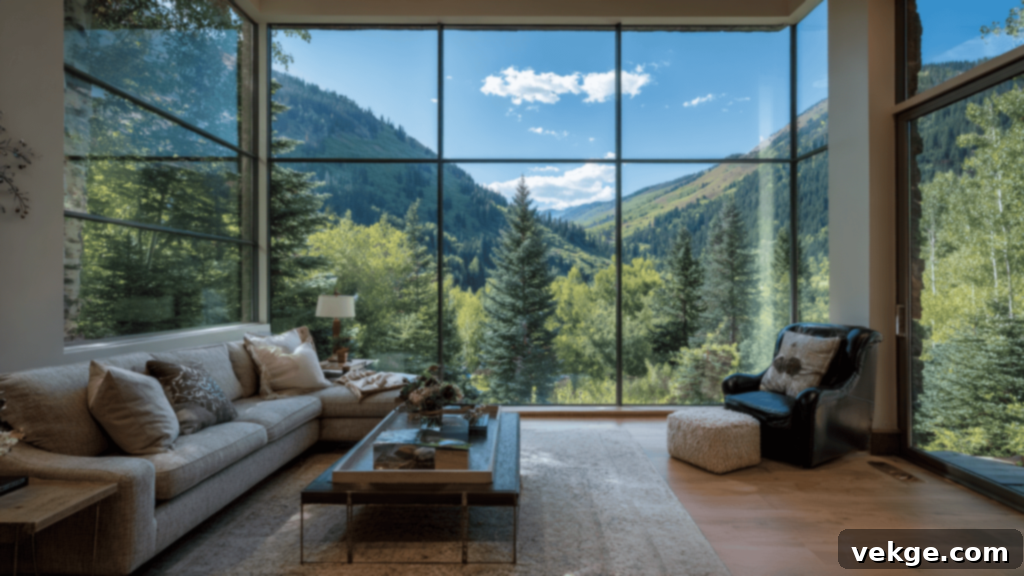
Picture windows are non-operable, fixed panes of glass designed specifically to maximize natural light and provide expansive, unobstructed views of the outdoors. They serve as a focal point in a room, bringing the beauty of the exterior inside without the need for ventilation.
- Pros: Offers the clearest and widest views possible, exceptional natural light transmission, and typically boasts the highest energy efficiency due to its fixed, tightly sealed design, requiring minimal maintenance.
- Cons: Provides no airflow or ventilation, and cannot be used as an emergency exit, which can be a critical safety consideration in certain rooms.
- Best For: Living rooms, dining areas, staircases, or any space where capturing a scenic view and abundant natural light is the primary goal, especially if ventilation is handled by other nearby windows.
6. Sliding Windows
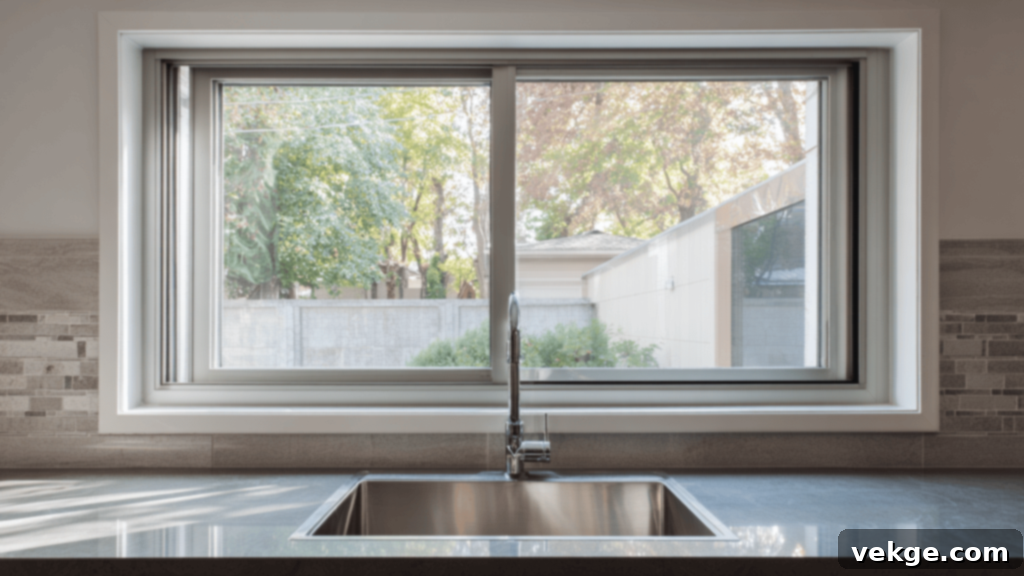
Sliding windows, also known as gliders, open by one or more sashes moving horizontally along a track. They are renowned for their ease of operation and minimalist design, making them a popular choice in modern and contemporary homes where wide openings are desired. They don’t project outward, making them suitable for areas adjacent to walkways.
- Pros: Effortless to operate, excellent for wider window openings where vertical space is limited, and generally low maintenance due to fewer complex moving parts.
- Cons: Only allow for a maximum of 50% opening (if one sash slides over the other), and the tracks can accumulate dirt and debris, requiring occasional cleaning to ensure smooth operation.
- Best For: Living rooms, kitchens, or any space with wide wall areas where a simple, unobstructed opening is preferred.
7. Bay Windows
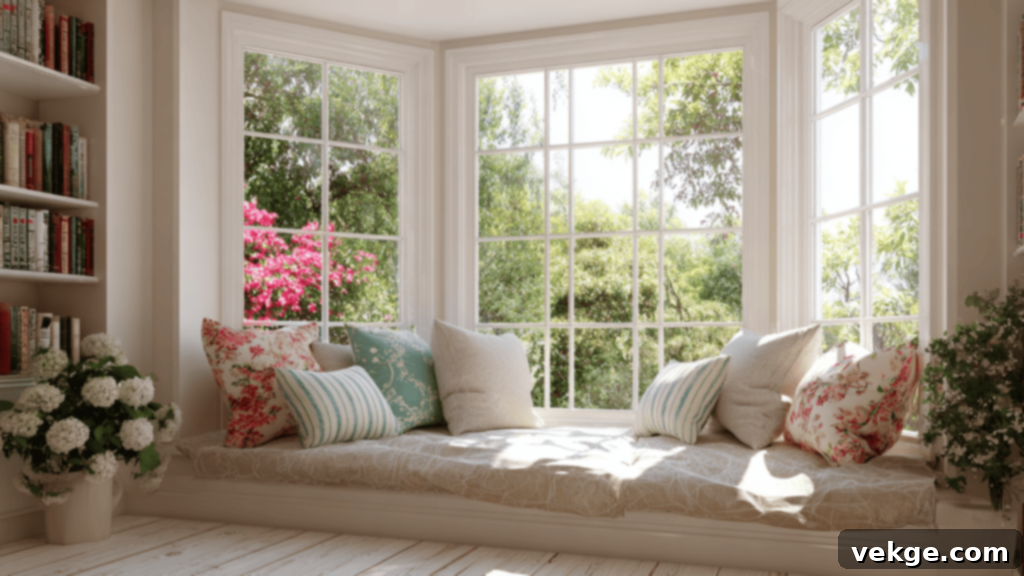
Bay windows are a distinctive architectural feature that projects outward from the main wall of a house, typically consisting of three panels: a large central picture window and two smaller, angled side windows (often casement or double-hung). They create additional interior space, enhance natural light, and offer panoramic views, significantly boosting a home’s curb appeal.
- Pros: Adds valuable interior floor space (often enough for a window seat or display area), dramatically increases natural light, provides panoramic views, and greatly enhances a home’s exterior aesthetic and resale value.
- Cons: Generally have a higher initial cost and require more complex installation compared to flat windows due to their structural projection.
- Best For: Living rooms, dining rooms, or master bedrooms where you want to create a focal point, add seating, and maximize light and views.
8. Bow Windows
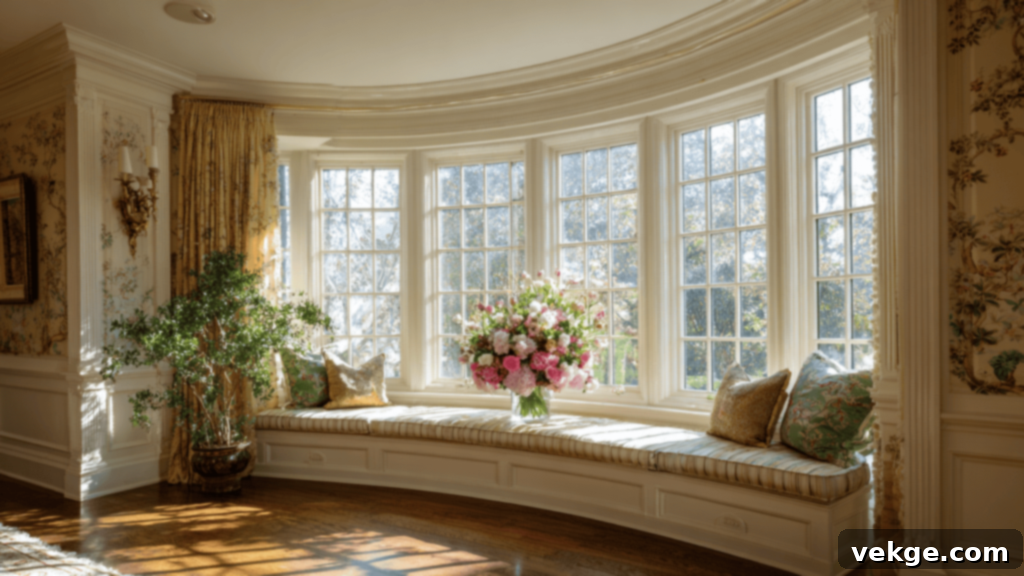
Bow windows are a graceful variation of bay windows, typically featuring four to six identical window panels that form a gentle, expansive curve as they project outward from the home. This creates a softer, more rounded aesthetic both inside and out, offering an elegant visual impact and generous light.
- Pros: Provides a truly elegant and sophisticated look, creates a beautiful extra seating or shelf space, and allows for an abundance of natural light to flood the room from multiple angles.
- Cons: Among the most expensive window options due to their complex structure and multiple panels, requires a substantial amount of wall space, and their installation is more intricate and time-consuming.
- Best For: Formal living rooms, master bedrooms, or any large wall where homeowners desire a grand, architectural statement and maximum light.
9. Garden Windows
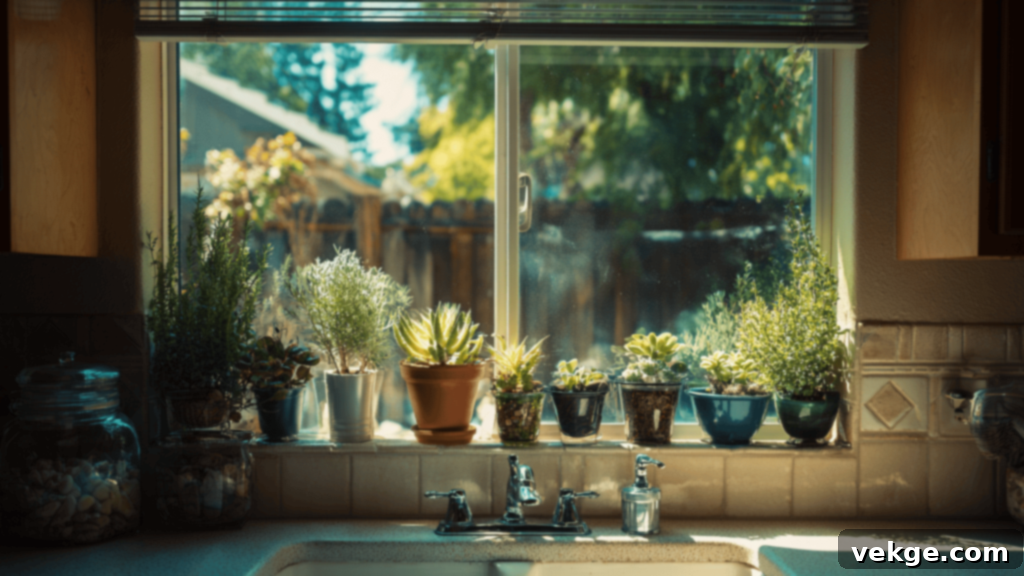
Garden windows are small, box-like windows that project outward from the wall, essentially creating a mini-greenhouse. With glass on all sides and a shelf inside, they are specifically designed to maximize sunlight exposure, making them perfect for growing herbs, small plants, or displaying decorative items.
- Pros: Ideal for indoor plants, herbs, or decorative items, brings in an abundance of direct sunlight, and adds a unique, charming architectural detail to your home.
- Cons: Can potentially allow more heat gain in summer or heat loss in winter if not properly sealed and insulated, and require diligent maintenance to prevent leaks and ensure proper sealing.
- Best For: Kitchens, especially above the sink, where they can serve a practical purpose for growing herbs while adding aesthetic appeal.
10. Skylight Windows
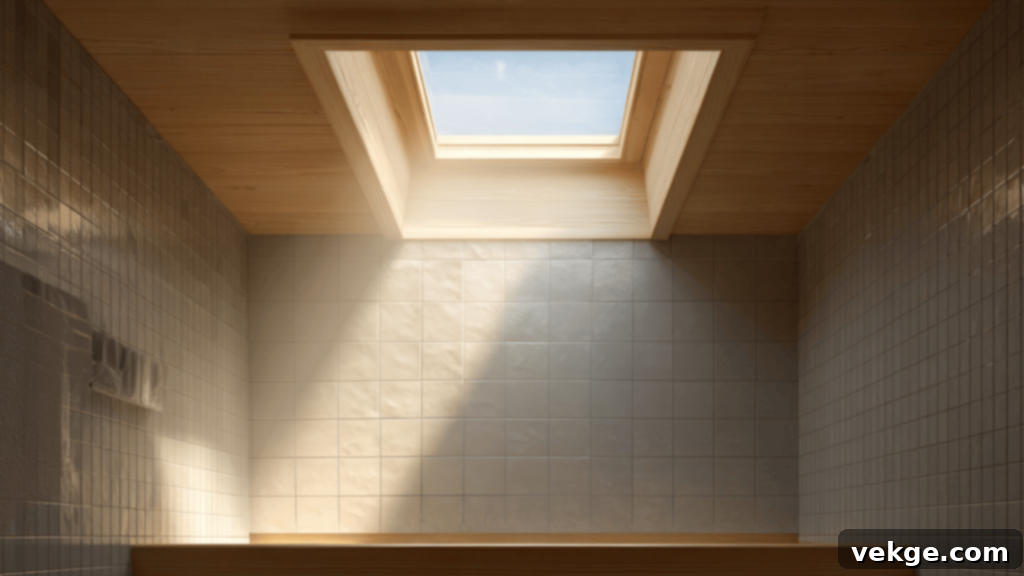
Skylights are windows specifically designed for installation in the roof, allowing natural light to enter from above. They are an excellent solution for brightening interior spaces that lack sufficient wall space for traditional windows or for adding a dramatic architectural element. Some skylights are operable, offering additional ventilation.
- Pros: Dramatically brightens dark interior rooms, conserves valuable wall space, and provides excellent privacy by being out of sightlines. Operable models can also aid in passive ventilation.
- Cons: Installation is more complex and typically more expensive than wall windows, cleaning can be difficult, and if not perfectly installed and sealed, they pose a higher risk of leaks.
- Best For: Bathrooms, attics, hallways, or any room that benefits from an influx of natural overhead light, or where privacy from adjacent properties is a concern.
11. Hopper Windows
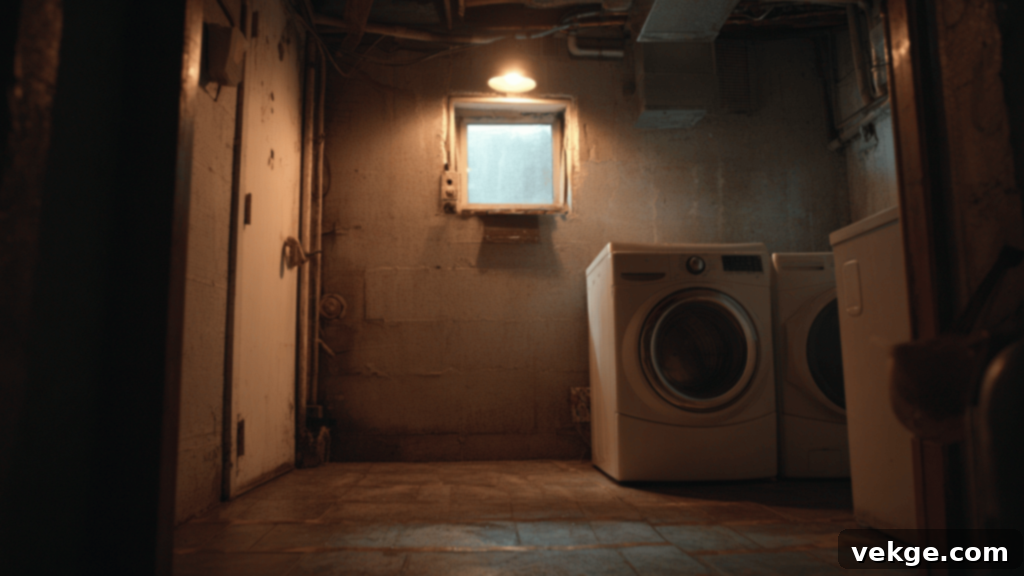
Hopper windows are typically small and rectangular, hinged at the bottom, and open inward from the top. This unique opening mechanism allows them to effectively direct airflow upwards, preventing dust and debris from entering directly. They are often found in utilitarian spaces due to their compact size and efficient ventilation.
- Pros: Excellent for tight or confined spaces, very secure when closed due to their robust latching, and highly effective at blocking drafts when sealed, contributing to better insulation.
- Cons: Generally limited in size, making them unsuitable for large openings, and the inward opening can sometimes interfere with interior blinds or curtains.
- Best For: Basements, garages, utility rooms, or small bathrooms where space is at a premium and controlled ventilation is needed.
12. Jalousie Windows
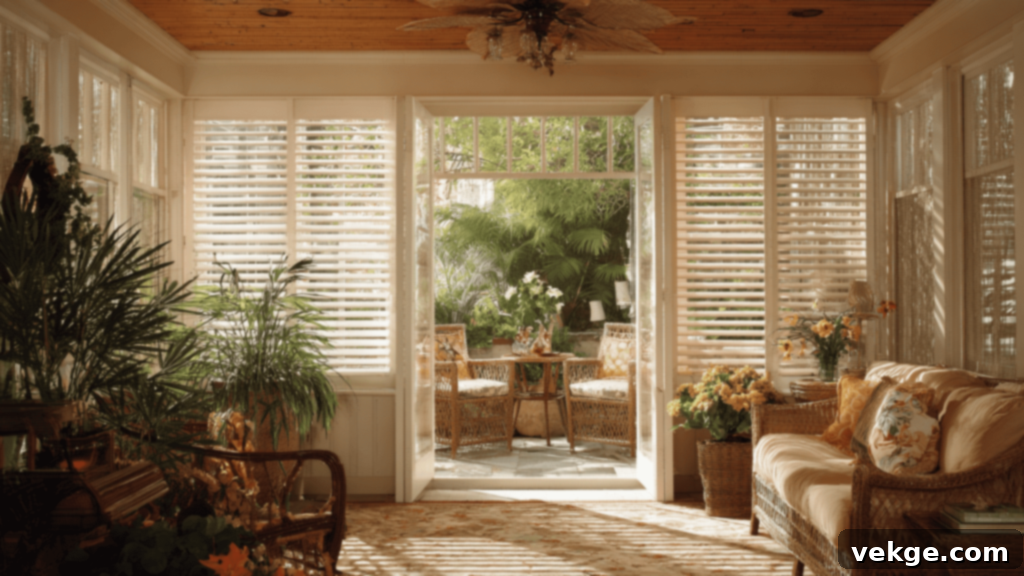
Jalousie windows, characterized by multiple horizontal glass slats that pivot open simultaneously like a set of blinds, were once very popular in warm, tropical climates. They are designed to provide maximum airflow and maintain privacy even when open. While less common in new construction today, they still offer a unique aesthetic.
- Pros: Offers exceptional, full cross-ventilation, lends a distinct tropical or retro architectural style, and is typically an affordable option for certain applications.
- Cons: Generally poor energy efficiency due to numerous seals between slats, less secure than other window types, and challenging to seal completely against wind, rain, and insects.
- Best For: Enclosed porches, sunrooms, or older homes in perpetually warm climates where energy efficiency is less critical than abundant airflow.
13. Arched Windows
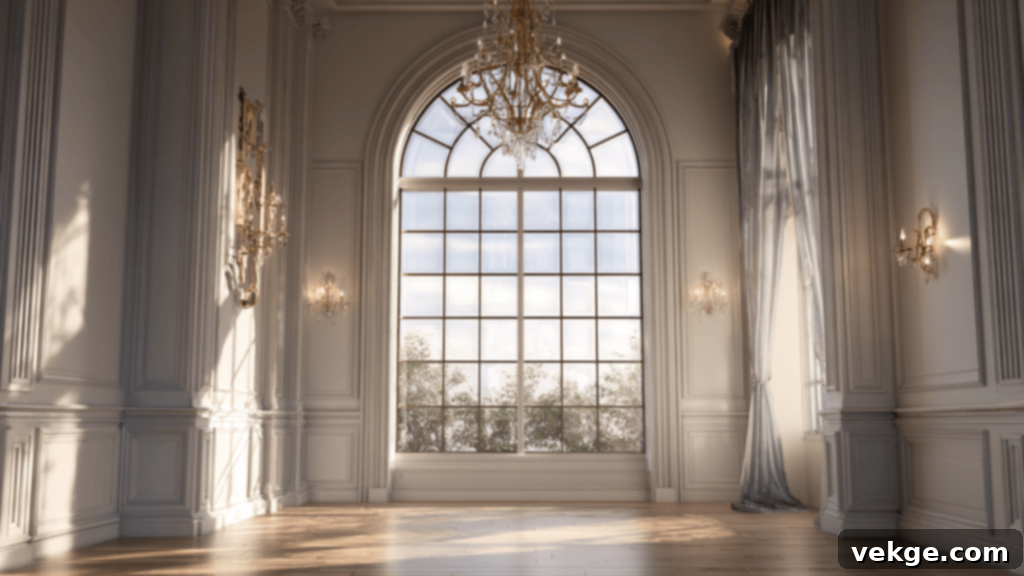
Arched windows are defined by their distinctive rounded top, which adds an elegant and sophisticated architectural detail to any home. They are often fixed (non-operable) and typically used for decorative purposes, enhancing natural light and drawing the eye upwards to create a sense of grandeur and openness.
- Pros: Highly decorative and unique, creates a strong visual statement, adds perceived height and elegance to a space, and complements various traditional and custom home styles.
- Cons: Most often fixed and do not open, custom sizing can be considerably more expensive, and finding window treatments can be challenging.
- Best For: Grand entryways, above doors or other windows to add architectural interest, or in rooms with high ceilings where a touch of classic sophistication is desired.
14. Transom Windows
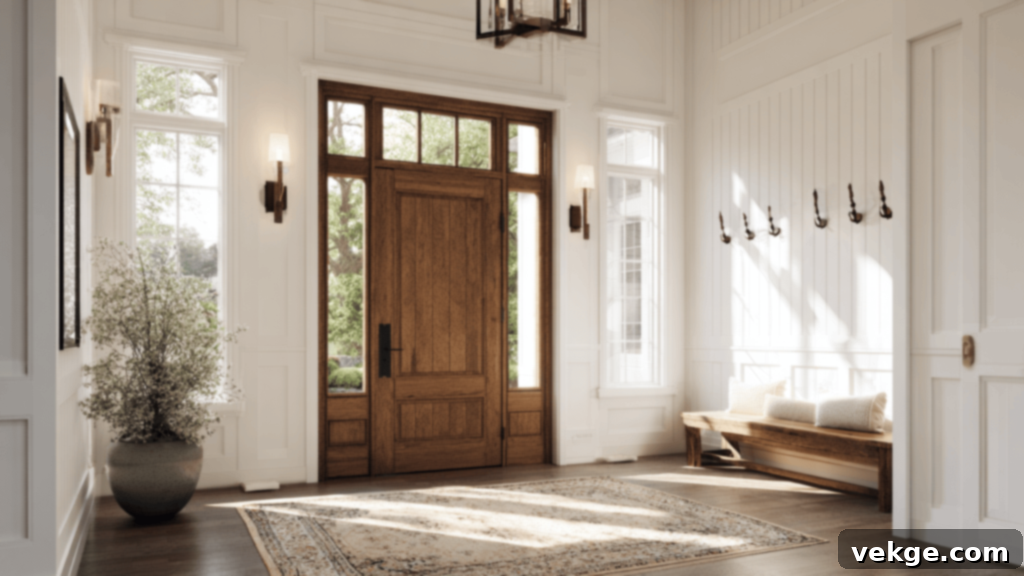
Transom windows are smaller, decorative windows typically installed directly above a door or another, larger window. They are designed to let in additional natural light, especially in areas that might otherwise feel dim, and can come in various shapes, including rectangular, arched, or even half-round. While often fixed, some operable transom windows exist.
- Pros: Significantly enhances natural light penetration into a room or hallway, adds elegant architectural detail and historical charm, and can be specified as fixed or operable for subtle ventilation.
- Cons: Often requires custom sizing and installation, which can increase costs, and due to their small size and high placement, they offer only very limited airflow.
- Best For: Above front doors, in hallways, or in rooms with tall ceilings where an extra touch of light and classic detail is desired.
15. Custom-Shaped Windows
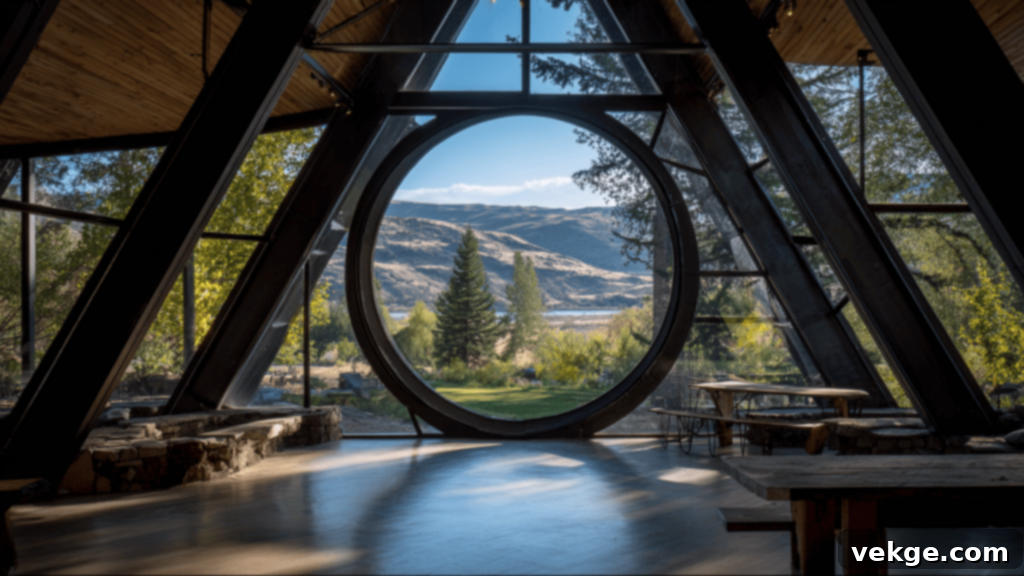
Custom-shaped windows are precisely what they sound like: windows manufactured to fit unique, non-standard shapes such as triangles, circles, octagons, stars, or even complex geometric patterns. They are designed to match a specific architectural vision, fill unconventional spaces, or create a distinctive focal point that standard window types cannot achieve.
- Pros: Offers full personalization and unique architectural expression, allows for stunning visual accents that make a home stand out, and can perfectly fit challenging or non-standard wall layouts.
- Cons: Significantly higher price point due to custom manufacturing, often fixed (non-operable), and typically involves longer lead times for design and production.
- Best For: Enhancing architectural features, creating dramatic accent walls, or perfectly integrating light into spaces with unique structural demands.
Specialty Window Categories: Beyond the Basics
While the standard window types offer excellent functionality and style, some homeowners have specific needs that call for specialized solutions. These windows are engineered with additional features to address concerns like energy conservation, noise reduction, or smart home integration.
16. Energy-Efficient Windows
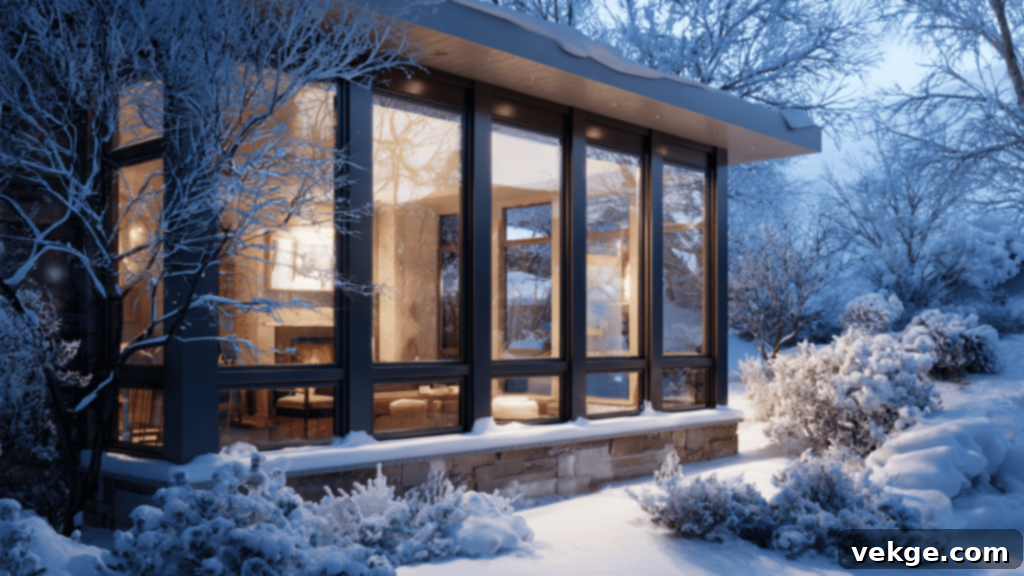
Energy-efficient windows are engineered to significantly reduce heat transfer, keeping your home warmer in winter and cooler in summer. This not only enhances year-round comfort but also leads to substantial savings on heating and cooling bills, making them an excellent long-term investment for any homeowner.
What to look for:
- Low-E (Low-Emissivity) Coatings: Thin, transparent metallic layers applied to the glass that reflect infrared light (heat) while allowing visible light to pass through.
- Double or Triple Glazing: Multiple panes of glass separated by a sealed air or gas-filled space, dramatically improving insulation.
- Inert Gas Fills: Argon or Krypton gas filled between glass panes insulates better than air.
- U-Factor: A measure of how well a window prevents heat from escaping. Lower U-factor values indicate better insulation.
- SHGC (Solar Heat Gain Coefficient): Indicates how much solar radiation passes through the window and becomes heat inside your home. Lower SHGC values are desirable in hot climates, while higher values can be beneficial in cold climates to leverage passive solar heating.
- ENERGY STAR® Label: A certification indicating that the window meets strict energy efficiency guidelines set by the EPA and U.S. Department of Energy.
17. Soundproof Windows
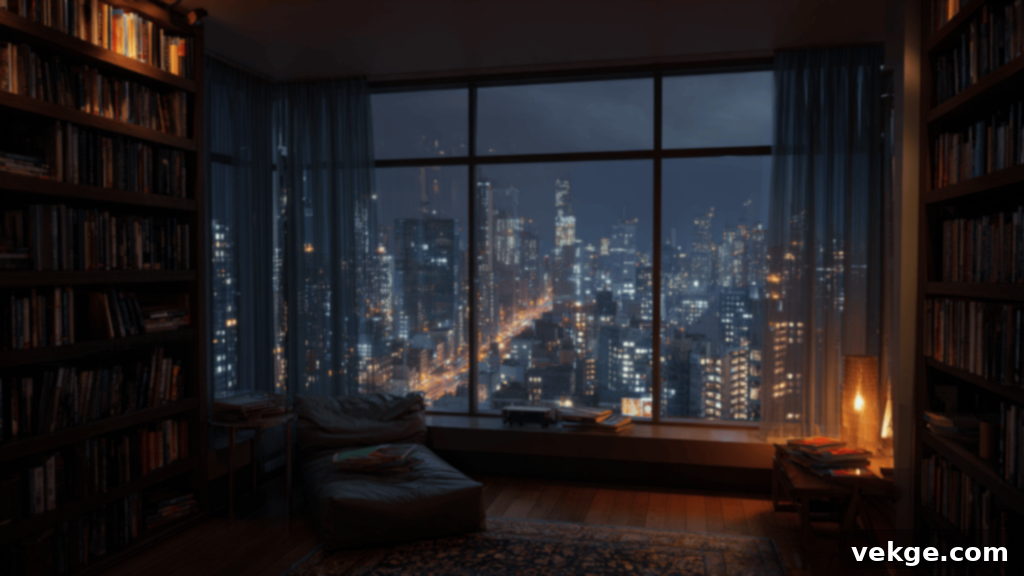
Soundproof windows are specifically designed to minimize the penetration of exterior noise into your home. They achieve this by utilizing features like laminated glass, varying glass thicknesses, and wider air gaps between panes. These specialized constructions effectively absorb and block sound waves, creating a quieter, more peaceful indoor environment.
- Pros: Significantly reduces external noise pollution, leading to calmer living spaces, improved sleep quality, and enhanced privacy within your home.
- Best For: Homes situated near busy roads, airports, train lines, construction sites, or in dense urban areas where noise is a significant concern.
18. Smart Windows

Smart windows incorporate cutting-edge technology to dynamically adjust their properties, such as tint or transparency, in response to light conditions or user commands. Some can automatically tint to block glare and heat, while others can be controlled via smartphone apps or remote controls, offering unprecedented control over natural light and privacy.
Features to consider:
- Electrochromic Glass: Changes tint in response to an electrical current, either automatically or manually.
- Integrated Blinds/Shades: Blinds sealed between glass panes that can be operated electronically.
- Remote/App Control: Allows for easy adjustment of tint or opening mechanisms from anywhere.
- Solar-Powered Options: Some smart windows integrate solar panels to generate their own power, further enhancing energy independence.
How to Choose the Right Window for Your Unique Home
Selecting the ideal window involves more than just liking a particular style. It requires a thoughtful consideration of the room’s function, your home’s architectural language, and the environmental factors of your location. Use this tailored guide to perfectly match form with function.
By Room
- Living Room: As a central gathering space, living rooms benefit immensely from abundant natural light and expansive views. Picture, bay, bow, or large sliding windows are excellent choices here. They maximize light and provide clear vistas, creating an open and inviting atmosphere, while also significantly boosting your home’s curb appeal.
- Kitchen: Kitchens demand both light and ventilation, especially over sinks or cooking areas. Casement, sliding, and garden windows are highly functional. Casement and sliding windows are easy to open, even with full hands, while garden windows provide a unique space for herbs, enhancing both utility and charm.
- Bathroom: Privacy and moisture resistance are paramount in bathrooms. Awning, frosted casement, or hopper windows are ideal. Awning windows offer ventilation in any weather, hopper windows provide secure, upward airflow, and frosted options ensure privacy while still allowing light.
- Bedroom: Bedrooms require a balance of natural light, ventilation, and emergency egress. Double-hung, sliding, and casement windows are versatile options. They provide excellent airflow and meet safety regulations, offering peace of mind alongside comfort.
- Basement: Often dimly lit and prone to stale air, basements benefit from compact, efficient windows. Hopper or awning windows are best. Installed higher on the wall, they are perfect for tight spaces and effectively vent out humid or stale air, improving air quality.
- Home Office: A home office needs ample natural light for productivity and a quiet environment for concentration. Picture, sliding, or smart windows are excellent choices. Picture windows offer distraction-free views, sliding windows provide easy, quiet ventilation, and smart windows can manage light and glare with a touch.
By Home Style
- Modern Homes: Modern architecture emphasizes clean lines, open spaces, and abundant light. Picture, sliding, or casement windows fit seamlessly. Their minimalist frames and large glass panes align perfectly with a sleek, contemporary aesthetic.
- Colonial Homes: Colonial homes are characterized by their symmetry and traditional appeal. Double-hung, bay, and transom windows are classic choices. Double-hung windows maintain the balanced facade, while bay and transom windows add period-appropriate elegance and light.
- Craftsman Homes: Craftsman homes value natural materials, detailed craftsmanship, and a welcoming feel. Casement, awning, or transom windows complement this style beautifully. Often featuring divided panes or wood frames, they echo the artisanal quality of Craftsman design.
- Farmhouse Style: Farmhouse homes exude rustic charm, practicality, and an appreciation for natural light. Double-hung, large picture, or arched windows are excellent fits. They create tall, open views and align with the style’s simple, yet inviting, aesthetic.
By Climate
- Hot Climates: In hot regions, the goal is to minimize heat gain and maximize cooling breezes. Tinted glass, awning, or casement windows are ideal. Tinted glass reduces solar heat, and awning and casement windows allow for controlled airflow, helping to cool the interior. Prioritize windows with low SHGC ratings.
- Cold Climates: Homes in cold climates need to retain warmth and prevent drafts. Double-pane casement or picture windows are best. Their tight seals and superior insulation properties keep heat inside, drastically cutting down on energy loss. Opt for windows with low U-factors for maximum thermal performance.
- Windy or Storm-Prone Areas: Durability and strong seals are crucial in areas susceptible to high winds or storms. Impact-rated casement or double-hung windows offer enhanced resilience. These windows are engineered to withstand severe weather, ensuring air and water tightness during harsh conditions.
- Humid or Rainy Zones: Moisture resistance and effective sealing are key in humid or rainy environments. Awning windows and vinyl frames are highly recommended. Awning windows can be open during light rain, and vinyl frames resist swelling, rotting, and corrosion, ensuring long-term performance without damage.
Feature and Cost Comparison at a Glance
This quick reference chart summarizes the most popular window types, comparing them across crucial categories like ventilation, view quality, energy efficiency, and estimated average cost. It’s a valuable tool to help you identify options that best align with your specific needs and budget.
|
Window Type |
Ventilation |
View Quality |
Energy Efficiency |
Avg. Cost |
|
Single-Hung |
Low (bottom sash only) |
Moderate |
High |
$150–$400 |
|
Double-Hung |
Medium (both sashes) |
Moderate |
Moderate |
$300–$600 |
|
Casement |
High (full opening) |
High |
High |
$300–$750 |
|
Awning |
Medium (even in rain) |
Moderate |
High |
$350–$800 |
|
Picture |
None |
Very High (unobstructed) |
Very High |
$200–$1,000 |
|
Sliding |
Medium (half opening) |
High |
Moderate |
$250–$600 |
|
Bay/Bow |
Medium (side panels) |
Very High (panoramic) |
Moderate |
$1,200–$3,500+ |
|
Hopper |
Low (inward from top) |
Low |
High |
$150–$400 |
|
Garden |
Low (small side vents) |
High |
Moderate |
$500–$1,200 |
Note: The prices provided are approximate estimates and can vary significantly based on factors such as window size, frame material, specific features (e.g., Low-E glass, gas fills), brand reputation, and your geographic location. Always obtain multiple local quotes for the most accurate and up-to-date cost information.
Window Materials & Frames: What You Need to Know
The frame material you select for your windows is just as important as the window type itself. It impacts not only the aesthetic appeal but also the window’s durability, maintenance requirements, and overall energy performance. Here’s a detailed look at the four most common window frame materials.
1. Vinyl Window Frames
Vinyl is arguably the most popular material for window frames today, primarily due to its balance of affordability, low maintenance, and energy efficiency. Made from polyvinyl chloride (PVC), vinyl frames are resistant to moisture, rot, and insects, making them a durable choice for many climates. They come in a variety of standard colors, though custom colors may be limited.
- Pros: Highly affordable, requires virtually no painting or sealing, excellent resistance to moisture and pests, and offers good thermal insulation.
- Best for: Budget-conscious homeowners, those seeking low-maintenance solutions, and properties in various climates where consistent performance is valued.
2. Fiberglass Window Frames
Fiberglass frames are renowned for their exceptional strength, stability, and longevity. Constructed from glass fibers and resin, they are incredibly durable and resistant to extreme temperature fluctuations, preventing warping, cracking, or swelling. While more expensive than vinyl, fiberglass can be painted and often mimics the appearance of wood, offering a premium look with superior performance.
- Pros: Superior strength and durability, highly stable in extreme temperatures, excellent thermal performance (very energy-efficient), and can be painted to match any aesthetic.
- Best for: Homeowners prioritizing long-term value, energy efficiency in challenging climates, and those who desire the look of wood without the maintenance.
3. Aluminum Window Frames
Aluminum frames are lightweight, robust, and feature a sleek, minimalist aesthetic that perfectly complements modern and contemporary architectural styles. They are highly resistant to corrosion and require minimal maintenance, making them a practical choice. However, aluminum is a good conductor of heat, meaning older or poorly designed aluminum windows can be less energy-efficient without thermal breaks.
- Pros: Very durable and strong, extremely low maintenance, resistant to rust and corrosion, and provides a clean, modern look, ideal for large window expanses.
- Best for: Modern and commercial designs, homes in warm climates where heat retention is less of a concern, and applications requiring slender, robust frames for large glass areas.
4. Wood Window Frames
Wood frames offer unparalleled natural beauty, warmth, and a classic aesthetic that can significantly enhance a home’s character. They are an excellent insulator and can be painted or stained to match any interior or exterior design. However, wood requires consistent maintenance, such as painting, staining, and sealing, to protect against moisture, rot, and insects.
- Pros: Provides a timeless, natural, and warm aesthetic, excellent natural insulator, and highly customizable with various finishes and colors.
- Best for: Historic homes, high-end custom builds, or homeowners who value classic design and are willing to invest in the necessary upkeep.
Window Frame Materials Compared: Maintenance, Cost, Efficiency & Style
This comparative chart offers a quick overview of how each primary window frame material stacks up across key considerations.
|
Material |
Maintenance |
Durability |
Energy Efficiency |
Cost |
Appearance |
|
Vinyl |
Low |
Good |
High |
Low |
Basic, clean, versatile |
|
Fiberglass |
Low |
Excellent |
Very High |
Mid–High |
Sleek, can mimic wood |
|
Aluminum |
Very Low |
Good |
Moderate (improving) |
Mid |
Modern, minimalist, strong |
|
Wood |
High |
Moderate (with maintenance) |
High (natural insulator) |
High |
Warm, classic, natural |
Your choice of window material should align with your climate’s demands, your home’s architectural style, your budget, and the level of maintenance you are prepared to undertake. By considering these factors carefully, you can select frames that offer both lasting performance and aesthetic appeal.
Conclusion: Making Your Informed Window Choice
Choosing the right windows for your home might initially seem like a complex decision, but with a clear understanding of the options, it becomes a much more manageable and even exciting part of your home improvement journey. You’ve now gained valuable insights into the diverse world of window types, their unique operational benefits, suitable applications for different rooms and home styles, and how various materials perform in different climates.
Remember to weigh what matters most to you: whether it’s maximizing natural light, enhancing airflow, achieving superior energy savings, or simply finding the perfect aesthetic match for your home. Each window type offers a distinct blend of these qualities. By aligning your priorities with the features of each window, you’re empowered to make smart, confident choices that will profoundly impact your home’s comfort, efficiency, and visual appeal for years to come.
Before finalizing your decision, always remember to compare local quotes from reputable window suppliers and installers. This ensures you’re getting the best value and expert installation for your chosen windows. Empower yourself with knowledge, and transform your living space with the perfect windows.
Ready to explore more home improvement tips and guides? Continue learning by browsing other helpful blogs on our website for simple, actionable advice on upgrading your home.
